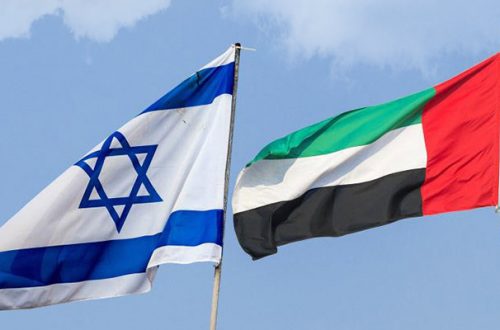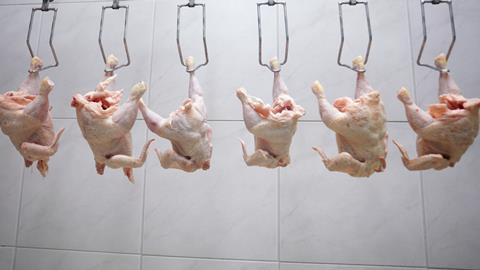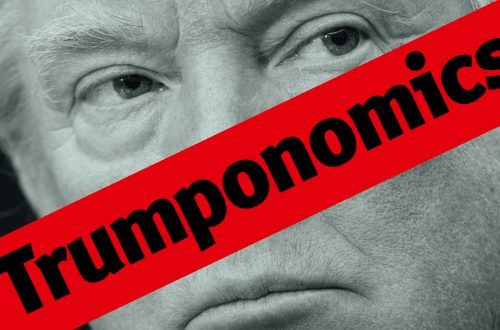Blogger Michael Totten has a great collection of photographs from his recent trip to Libya.
As you’d expect there are portraits of Ghaddafi all over Tripoli. Which prompted me to wonder why dictators insist their image is displayed everywhere and whether we can deduce anything from the practice?
Of course, the practice reflects the enormous ego of someone who believes they are the only person capable of running the country and, as they kid themselves, the only individual capable of keeping the nation safe from (other) exploiters or away from the dangers of ‘anarchy’. But is it not a very misguided strategy, from the point of view of a dictator seeking to maintain some level of support for his dictatorship?
I visited Tripoli a couple of years ago and at first found the Ghaddafi portraits an interesting novelty, even vaguely amusing. But it took less than a day to get sick of the sight of them. Within two days I started despising them and feeling slightly guilty about my earlier reaction. It made me wonder if it wasn’t a self-defeating exercise for a dictator. Do you really want to remind everyone, every day that you have sole power in the country?
One theory, is of course, the ‘Big Brother’ one, that as dictatorships survive on the basis of fear the omnipresence of ‘the leader’ (or ‘the guide’ as Gaddafi prefers with its revealing implication that the people are blind or foolish) is the perfect reminder that you better watch your step, that nowhere is safe from the eyes of power. Even if there isn’t a camera behind the face as in 1984, there is probably a secret policeman somewhere in your street, your workplace, your apartment block and the image is aimed at making sure you don’t forget that.
But how long can this work for? If I, a fleeting western visitor, was repelled by the pictures after 48 hours imagine what it must be like for those who have had to see such images every day of their lives for the past three decades? Don’t you become oblivious to them after a while? Don’t they just fade into the background as mentally you block them out?
Or do you, silently, curse the image everytime you see it? The people are not blind, so they surely draw the obvious conclusion from the rundown mess around them and the face that looks down from every crumbling building.
Does this not, therefore, accentuate one of the principle weak points of any kind of dictatorship or totalitarian state – namely that if you rule over everything then you will, eventually, take the blame for everything?
I remember a conversation I had with a former Communist Party official in the district of Budapest where I lived for a while. He told me about how in the early 1980’s when people were gradually allowed to express, within limits, their complaints and dissatisfaction, the party was bombarded with the kind of problems that local councillors have to deal with in democratic countries. If the plumbing in your flat was leaky, you blamed the party. After all, who else had failed you? If the rubbish wasn’t collected on time, it was the fault of the party not the refuse department. His view was that many of the reforms attempted during the last years of communist rule were an attempt to devolve responsibility. They weren’t done because the party had committed itself to pluralism but to get the people off their backs, to give them someone else to blame.
Hard-liners opposed such reforms, saying that they weakened the ‘leading role of the party’ and dangerously could lead to increasing demands for other kinds of autonomy. And, from the point of view of an authoritarian state, they were right. That is exactly what happened. Before long factories started to gain autonomy from central planning, independent student groups and political organisations began to emerge and by 1989 the party was forced to sit down with these new forces and negotiate the end of their one-party state – peacefully, the dictatorship was voted out of existence.
That isn’t the end that awaits the kind of dictators that insist on sharing their face with the entire population. There were very few portraits of Hungarian leader Janos Kadar in the 1980’s primarily because the Hungarian communists had learnt their lesson from the 1956 uprising when portraits of the Stalinist dictator Matyas Rakosi were destroyed with short-lived glee. Rakosi effectively ruled for seven years in Hungary, Kadar stayed in power for over 30. Rather than raging against internal enemies Kadar’s softer dictatorship adopted the slogan ‘If you aren’t against us, you are with us’, a policy which explains much about the confused and torn attitude many middle-aged Hungarians have towards the ‘old system’ and their various compromises with it.
I can only think of one country which could be described as a democracy where images of a leader can be found in bars and shops and on lapel badges as well as in state offices – Turkey. There one could be forgiven for thinking that the founder of the modern state, Mustafa Kemal Atatürk, is today the ruling dictator. For those who find themselves ‘enemies of the state’ in Turkey it probably still feels like he is.
I’d venture that you can guess quite a bit about the future end of a dictatorship from whether or not there are omnipresent portraits of the ‘great leader’. In Romania, where Ceacescu’s image was everywhere, there was no negotiated, peaceful end to the dictatorship. He was shot during the revolution. Saddam, of course, had his own particularly egotistical approach to his own image, portraying himself in all manner of macho poses, and we know what happened to his regime.
When I visited Iran, I was struck by how few images of Ayatollah Khomenei or subsequent Islamist revolutionary leaders stared at me. I got the impression Khomenei’s pictures had been quietly put in the back cupboard. I think that does give some clues as to the kind of regime that exists in Iran – a stagnating, post-revolutionary state suffering from an acute crisis of legitimacy.
I’ve never been to North Korea but we are told that there a good number of Kim Jong il images. Again, that tells us something about the North Korean dictatorship and the likely end that awaits it.
Indeed, proof that the frequency of the face does matter comes with news that portrait policy in North Korea is being analyised at the moment:
North Korea seems to be softening its hitherto rigid personality cult around leader Kim Jong-il, experts on the reclusive communist state said Thursday — although they were still unsure why the changes had been made.
Some diplomats in Pyongyang and experts in the South said this week portraits of Kim had been removed from some public places, starting as far back as September or even August.
Some visitors to the North have said fewer people wear lapel badges bearing Kim’s image. Seoul’s Yonhap news agency reported that Kim himself had ordered the portrait shift three weeks ago because he was concerned his image had been “lifted too high.”
And the dictators clearly study the history of similar regimes to their own. Ceaucescu was famously reported to have made the turn towards mass portraits and a personality cult following a visit to North Korea where he was delighted with how Kim il Sung presented himself. Now the reverse process could be happening.
According to Newsweek, the recent changes could have a Romanian link: Shortly after the revolutions that toppled half-a-dozen communist dictatorships in Eastern Europe back in 1989, according to Japanese journalist and North Korea watcher Ryo Hagiwara, Kim informed members of his ruling circle that he and they could easily end up like deposed Romanian leader Nicolae Ceausescu if they didn’t watch their step. For a full week in early 1990, Kim forced North Korean officials to watch multiple video showings of Ceausescu’s bloody death at the hands of an angry mob* and warned his colleagues of the dangers of losing control. One defector told Hagiwara that he recalled Kim obsessively repeating, “We will be killed by the people.”
That is the stark choice facing dictators. Unless they die on the job (like Kim’s old man), they have the choice of reforming themselves out of existence, as the Hungarians did, or they face the brutal and bloody end.
Counting the portraits might give us a clue as to which it is likely to be.
*Ceaucescu wasn’t killed by an ‘angry mob’ but was shot by a firing squad after a very quick court martial.


